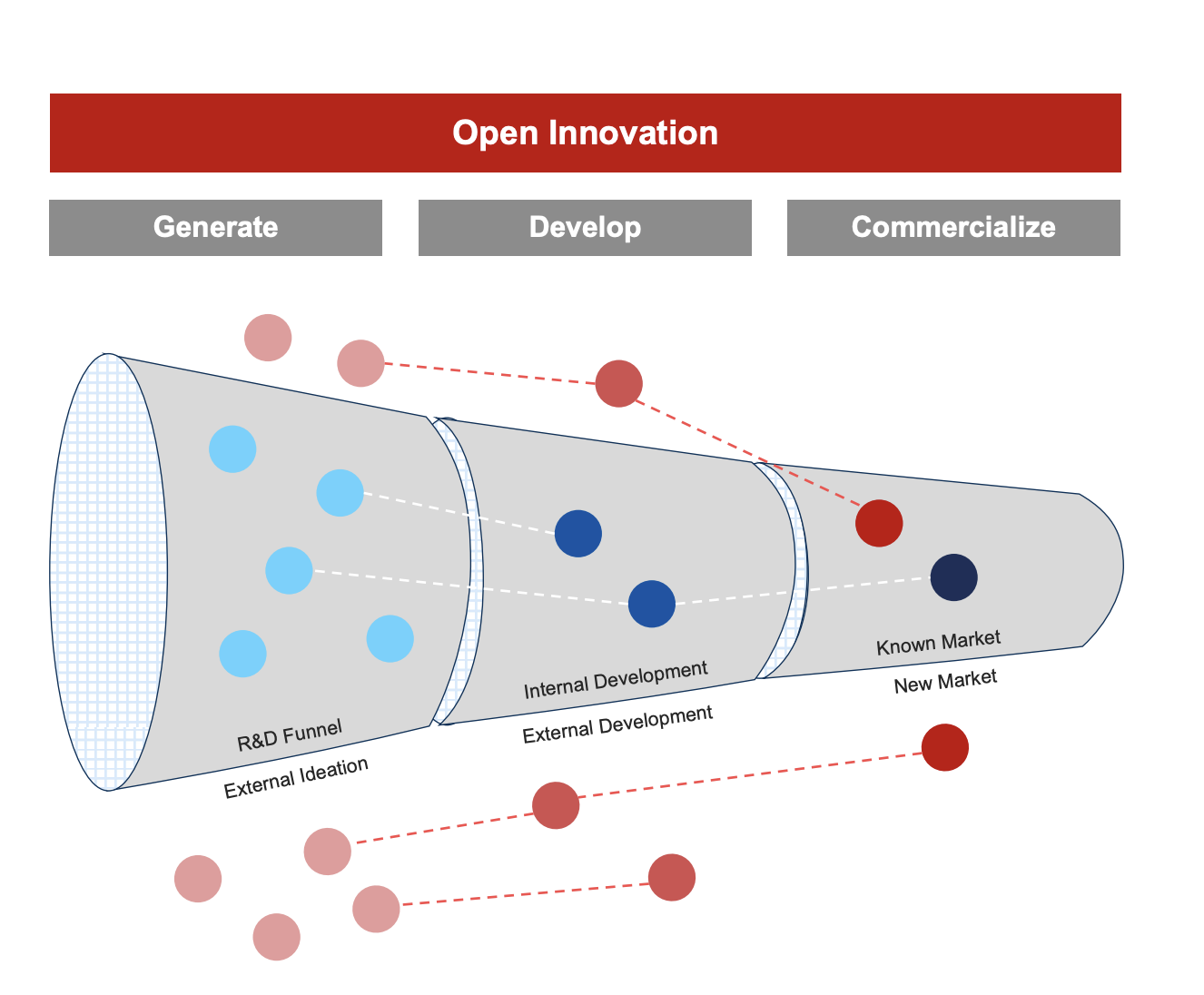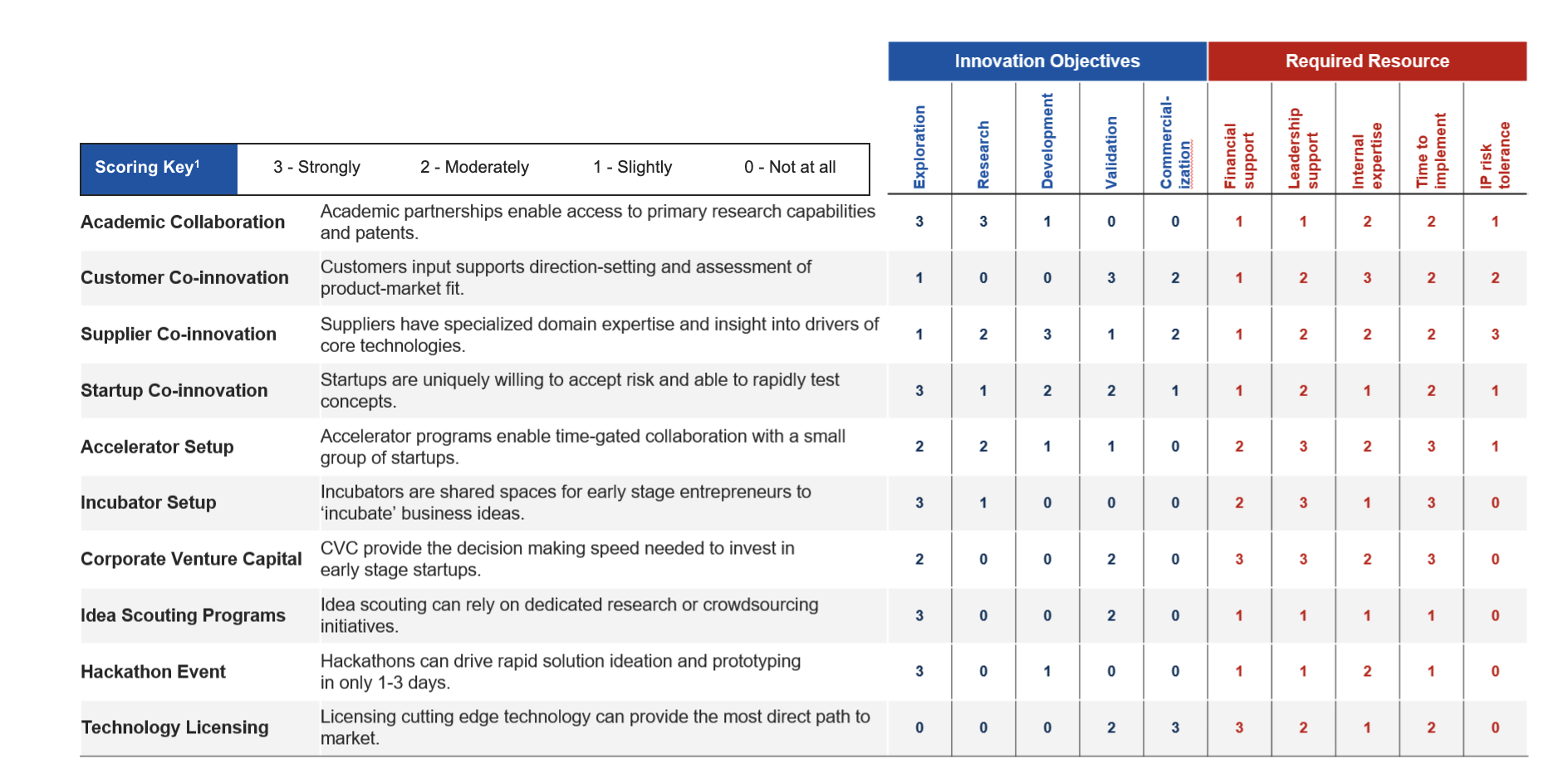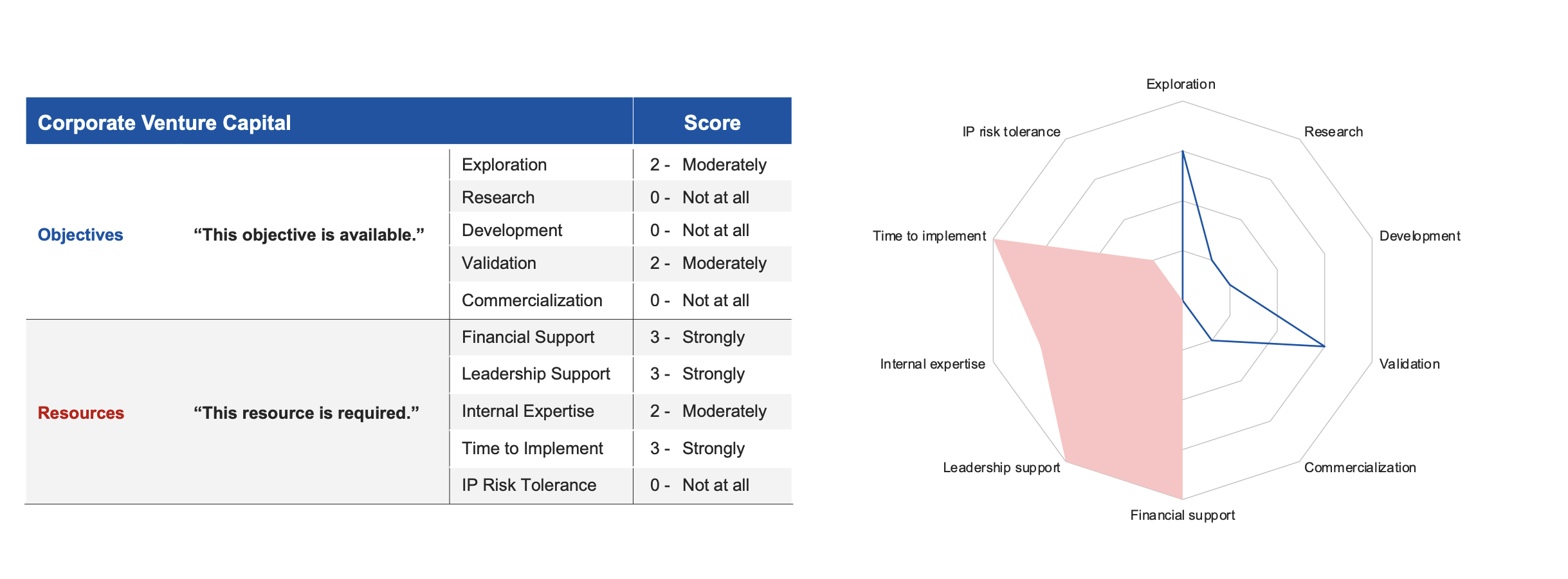Enable disruptive digital innovation in China
China is at the forefront of digital innovation yet foreign companies are often unprepared to participate due to a lack of local innovation capabilities. Open innovation strategies provide a solution. The term ‘open innovation’ was coined by Professor Henry Chesbrough of UC Berkeley in 2003 to illustrate how companies incorporate external ideas and expertise to advance their innovation goals. Dr. Chesbrough identified four factors driving the shift from closed to open innovation:
- Shorter innovation cycles for digital products
- Dispersed knowledge due to mass entrepreneurship
- Increased mobility of knowledge workers
- Rapid growth in venture capital to fund innovation
These factors have become increasingly important in China since the start of the decade. Modern China is among the world’s most digitized and entrepreneurial economies. Technology workers are highly mobile with numerous opportunities and limited company loyalty. And local competitors have used corporate venture capital and M&A to expand rapidly into new markets. In the decades following China’s economic opening up global companies secured market share with superior technology and products. The competitive landscape is now shifting due to the increasing importance of both digital technologies and localization. Digital technologies are outside the core competencies of many incumbent market leaders. And they enable disruptive new value propositions, business models and distribution channels. | 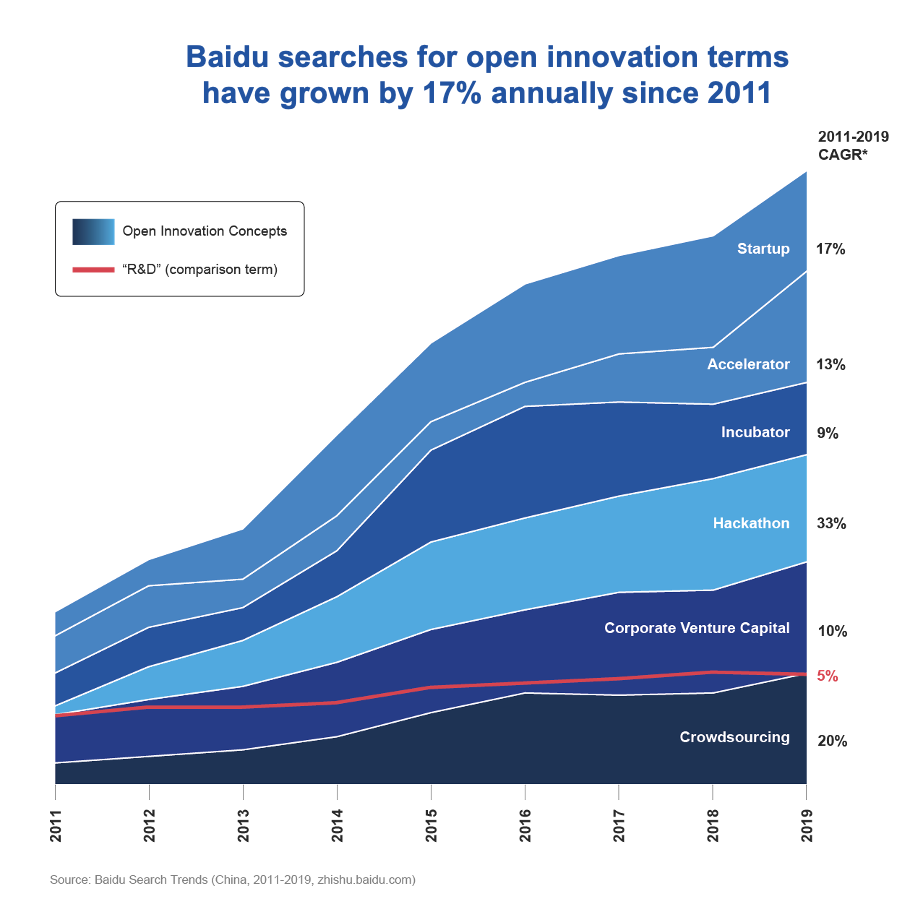 |
Analysis of Baidu search term trends indicate a growing interest in open innovation across China. And a recent survey of multinational companies by the German Chamber of Commerce found that a significant proportion of companies are planning to collaborate with external partners, with strongest growth in engagement among startups, consultants and public research institutes.
Enable disruptive digital innovation in China
Open innovation strategies require collaboration with partners who possess complementary expertise and capabilities. These partners form a company’s innovation ecosystem. This ecosystem includes traditional supply chain partners and external partners who play different roles based on their competencies and objectives. For example, engaging customers can be useful for generating ideas, while collaborating with startups is useful for rapidly building and testing concepts. This playbook provides a roadmap for using your innovation ecosystem to move faster, reduce risk, and act on opportunities that are beyond your internal capabilities. The ten strategies included in this playbook are applicable globally, but they are particularly relevant in enabling digital innovation in China.

Advantages of open and closed strategies
| Companies traditionally allocate the majority of R&D budgets to closed innovation programs that reside within the organization. Closed innovation provides control of processes and clear ownership of intellectual property. This model is preferable when the company has the necessary expertise and can accurately assess risks. It is less practical when innovation extends beyond core competencies and when the rapid pace of change prevents accurate risk assessment. |
|
| Open innovation models are based on the belief that organizations and individuals outside the company can contribute to achieving strategic goals. Open innovation is effective when many potential opportunities exist and the company lacks the time, resources or expertise to identify or validate them. This is often the case for foreign companies pursuing digital innovation in China due to the rapid pace of change and their traditional reliance on innovation capabilities in home markets. |
|
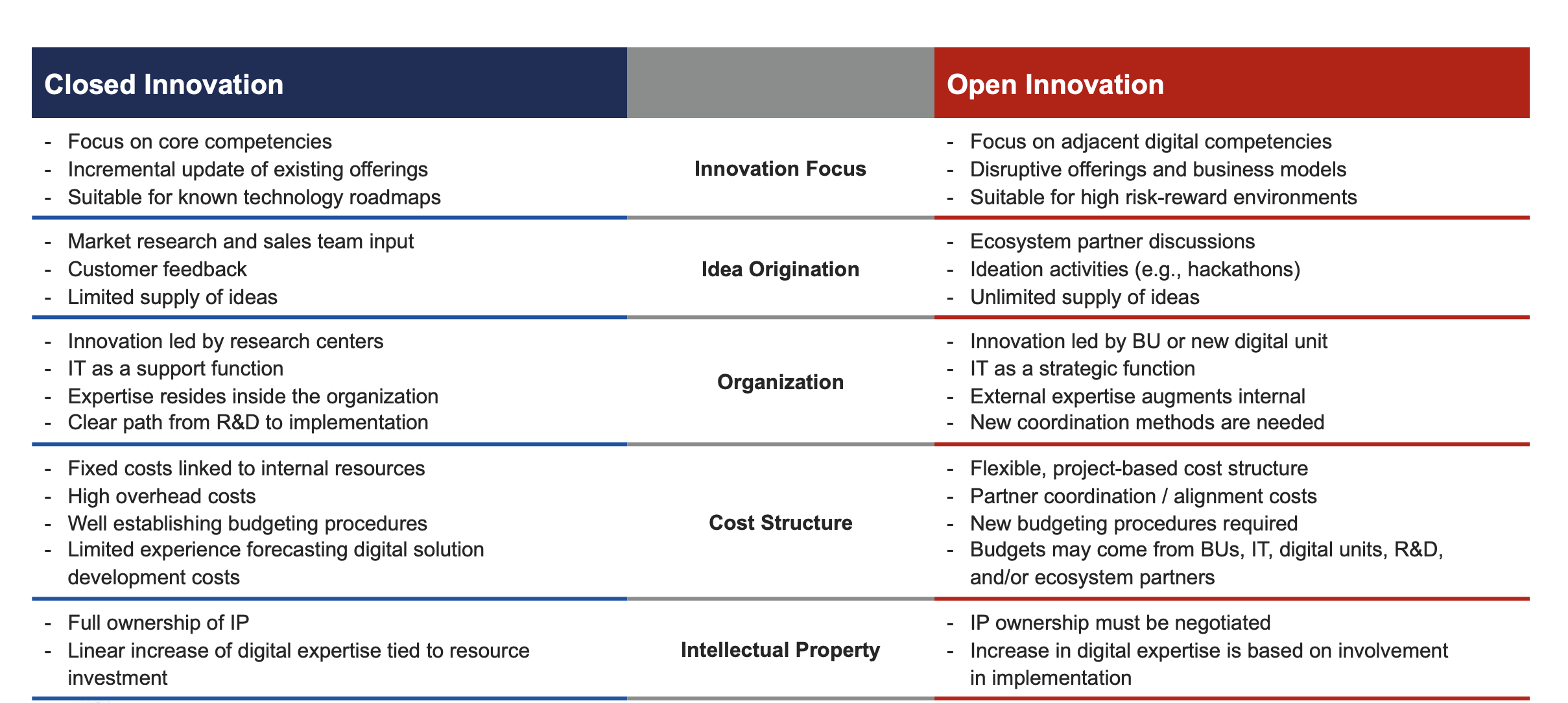
Your open innovation playbook
Companies can pursue several strategies to engage with external partners and achieve their digital innovation goals. IoT ONE’s open innovation playbook defines the ‘innovation objectives’ and ‘resource requirements’ of ten common strategies. No strategy is better than another. The purpose of this playbook is not to compare success rates but to assess the fit of each strategy with a company’s objectives and resources. The scoring key is based on our experience and has been validated through interviews with innovation professionals. However, scores should be viewed as a guide. Each innovation strategy can be restructured to accomplish different objectives or to utilize different resources.

Available Open Innovation Strategies
Selecting the optimal innovation strategy
The open innovation workbook is an Excel tool for evaluating which innovation model will best meet your needs. The process follows three steps:
In the example below, the Accelerator Setup model is tied for rank five, with a total score of four. The model provides moderate capability in exploration and evaluation but the self assessment requires strong capability. It also requires a longer implementation timeline and greater internal expertise than the company has available. Rather than setting up an accelerator, the company should consider organizing a startup co-innovation or idea scouting program. These models provide a stronger objective and resource fit. | 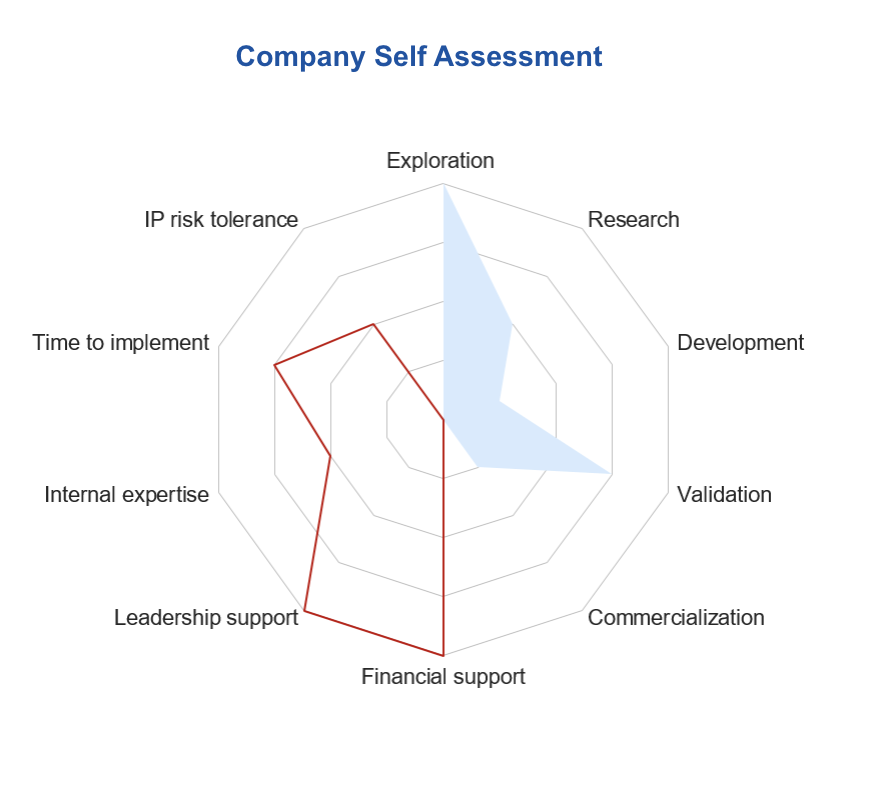 |
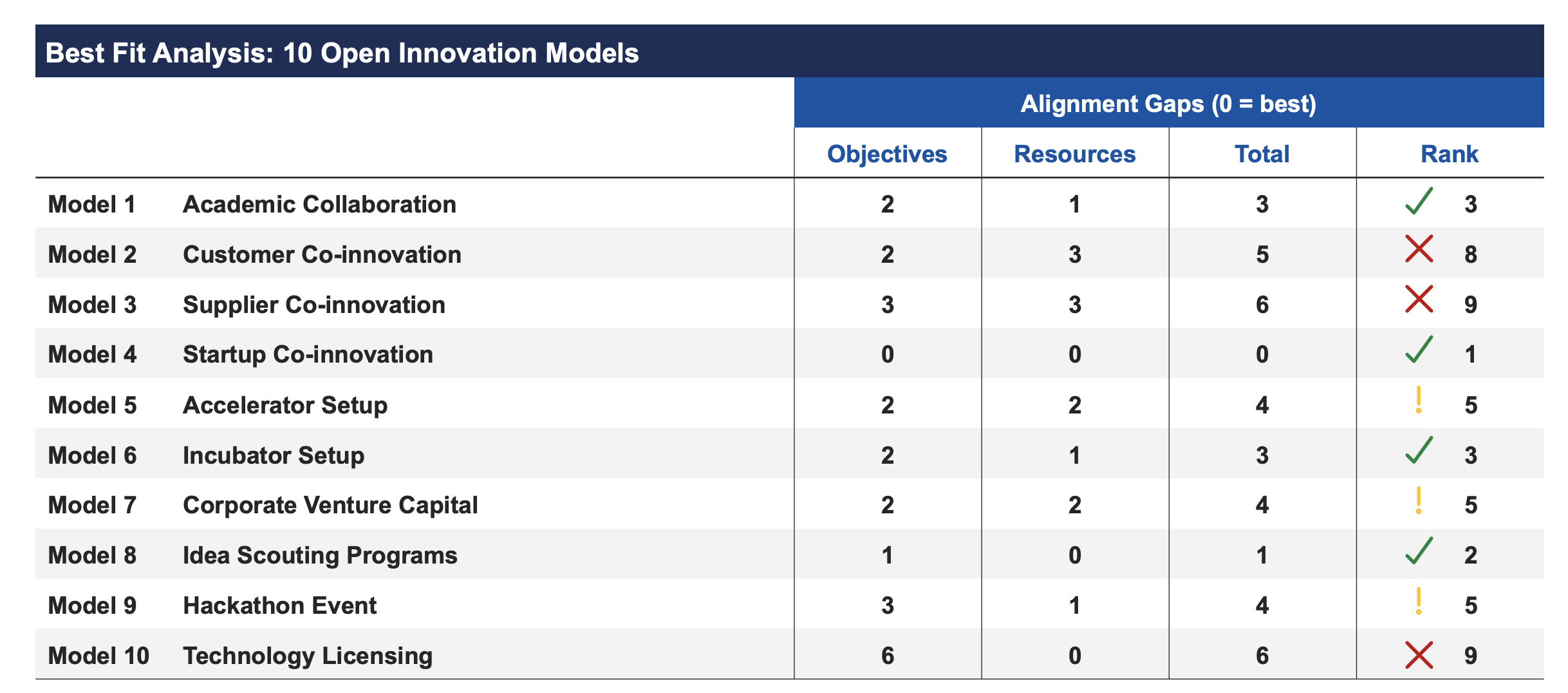
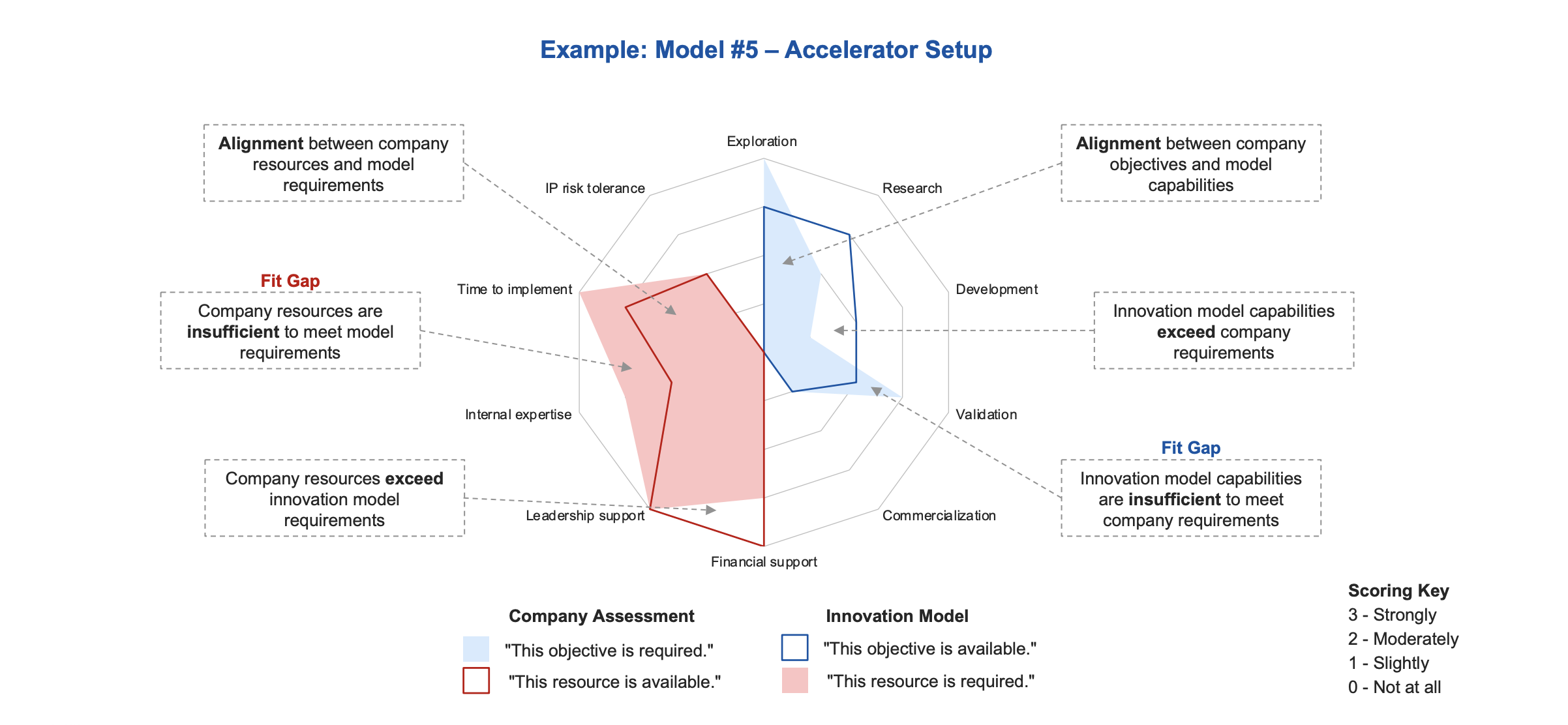
Innovation Strategy Playbook #1
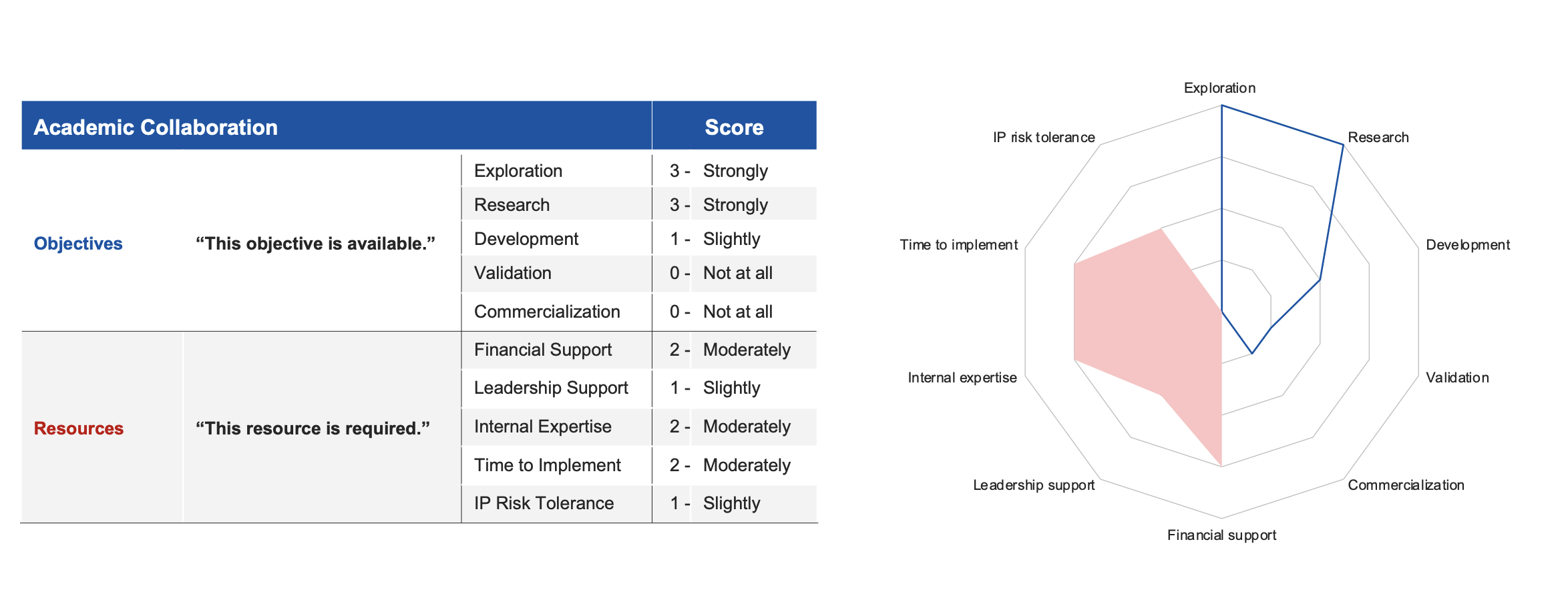
Innovation Strategy Playbook #2
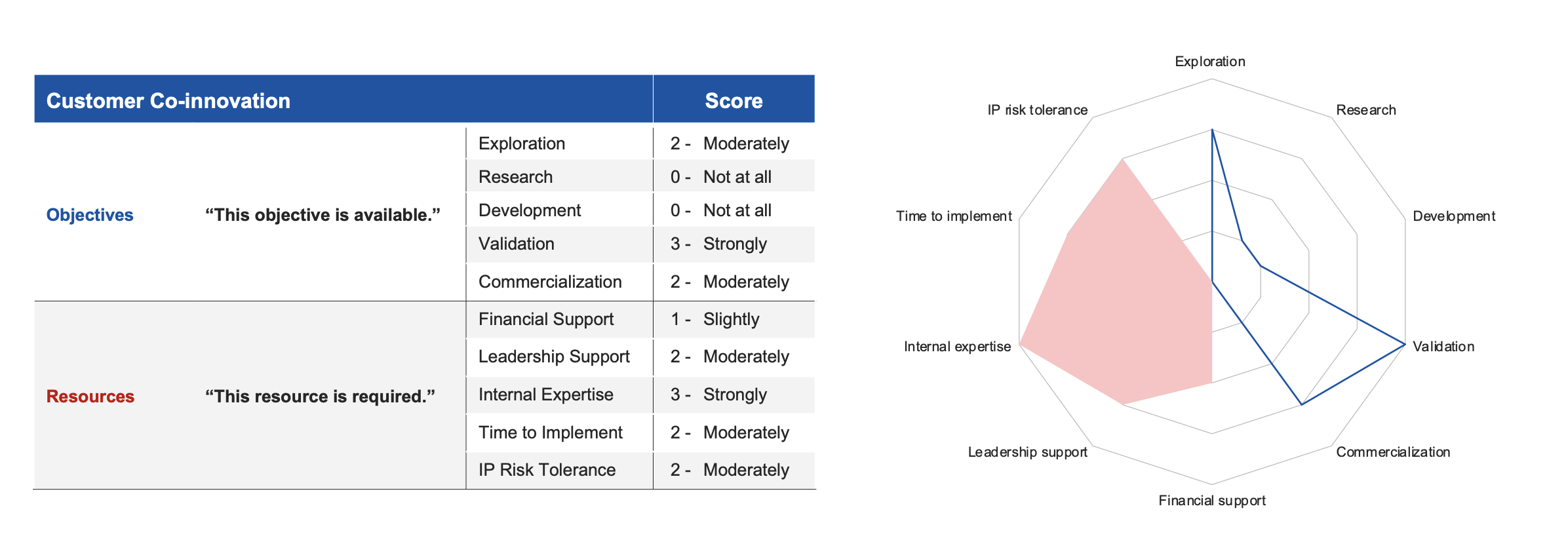
Innovation Strategy Playbook #3

Innovation Strategy Playbook #4
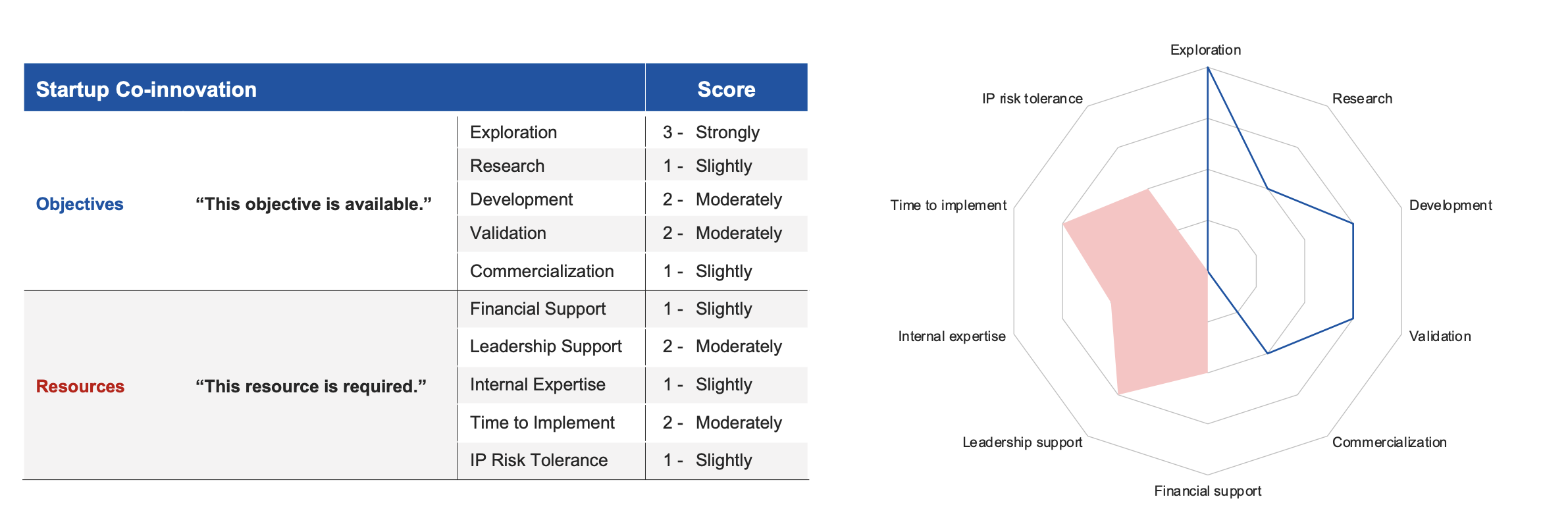
Innovation Strategy Playbook #5
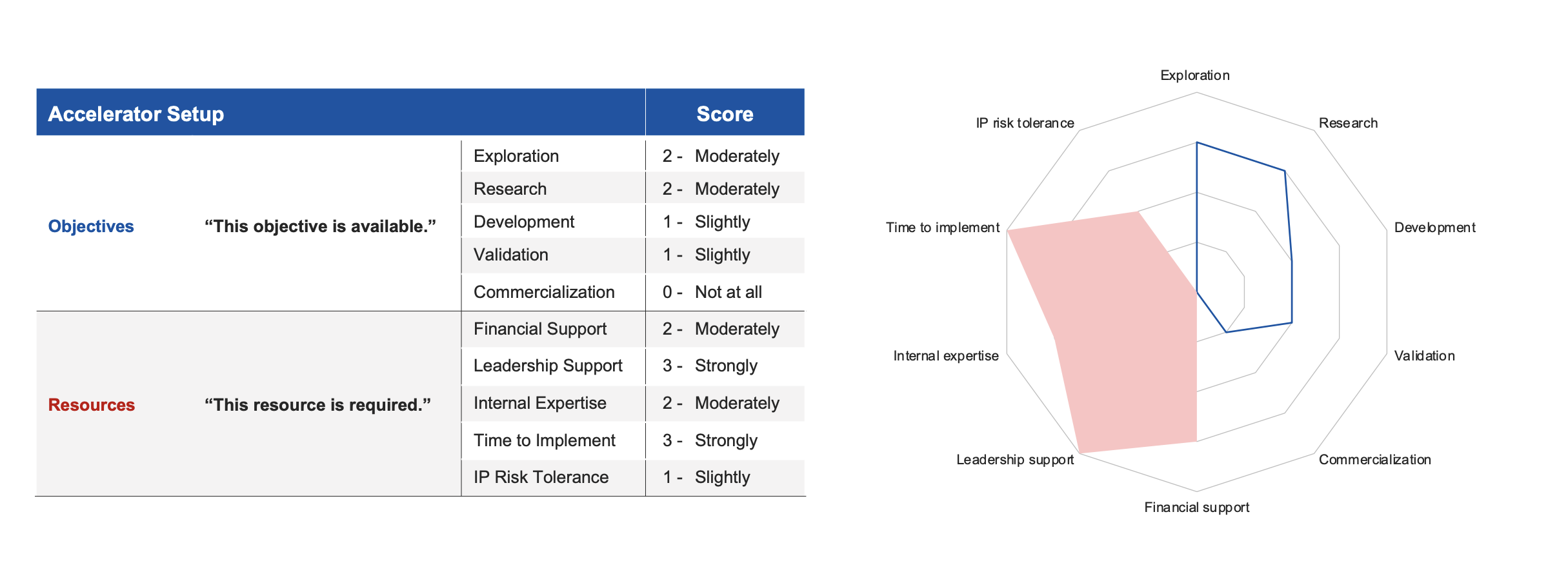
Innovation Strategy Playbook #6
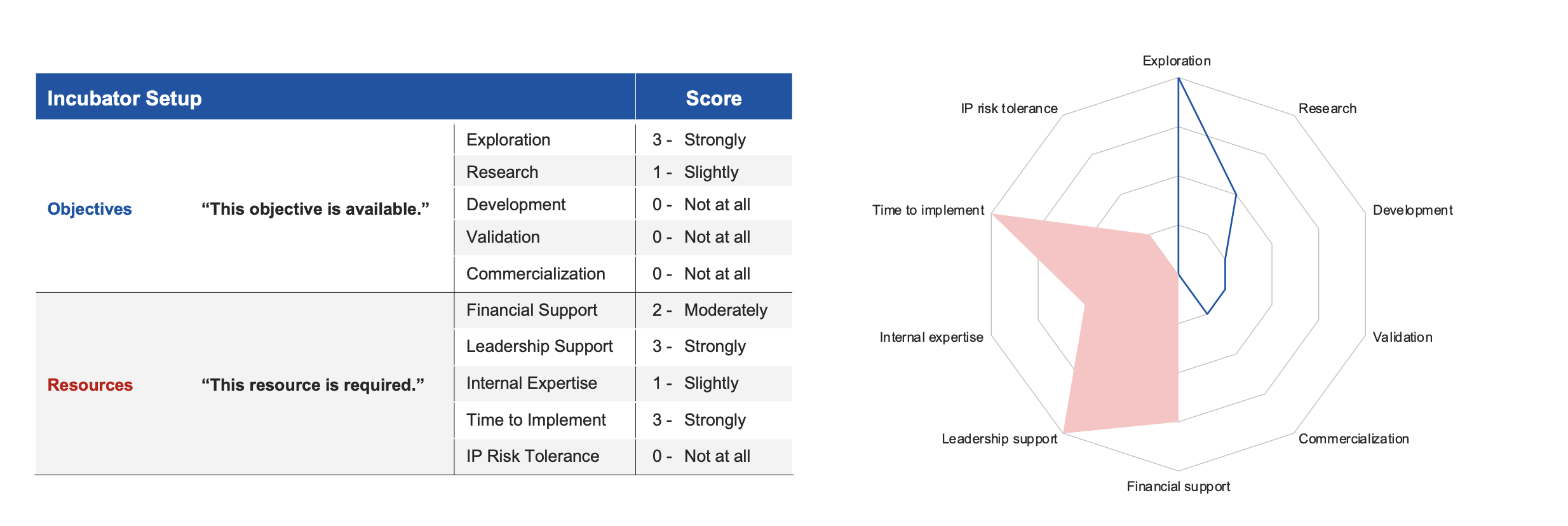
Innovation Strategy Playbook #7
Innovation Strategy Playbook #8
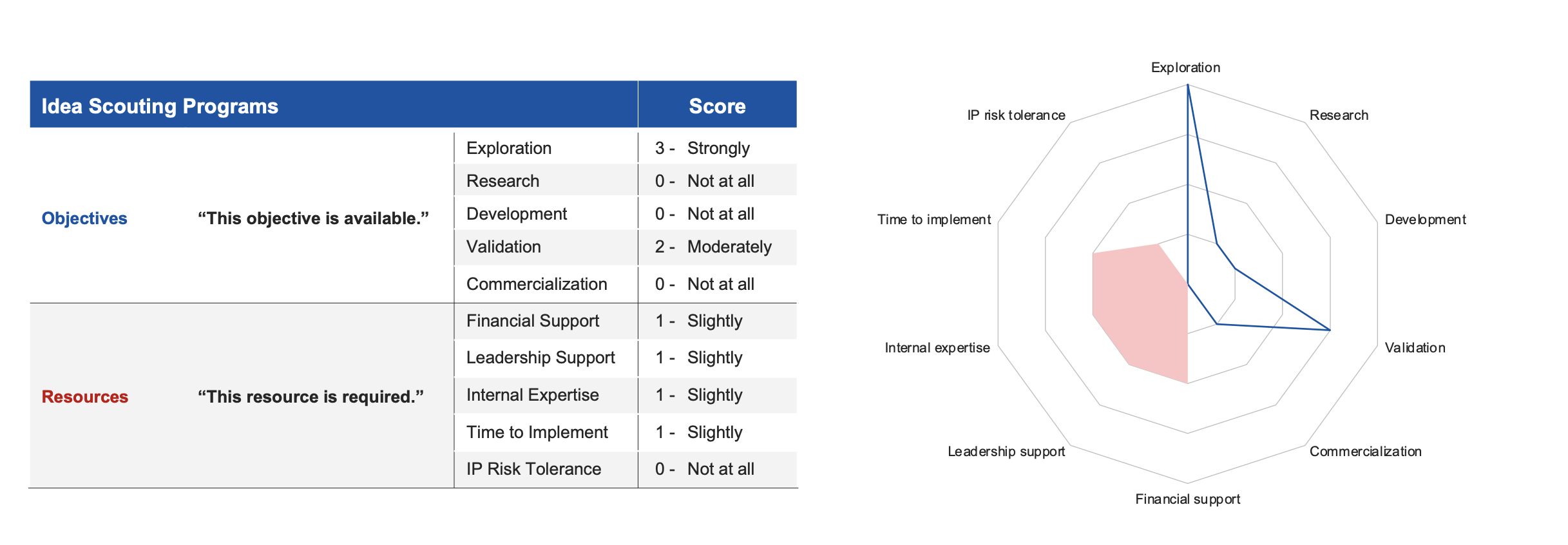
Innovation Strategy Playbook #9

Innovation Strategy Playbook #10
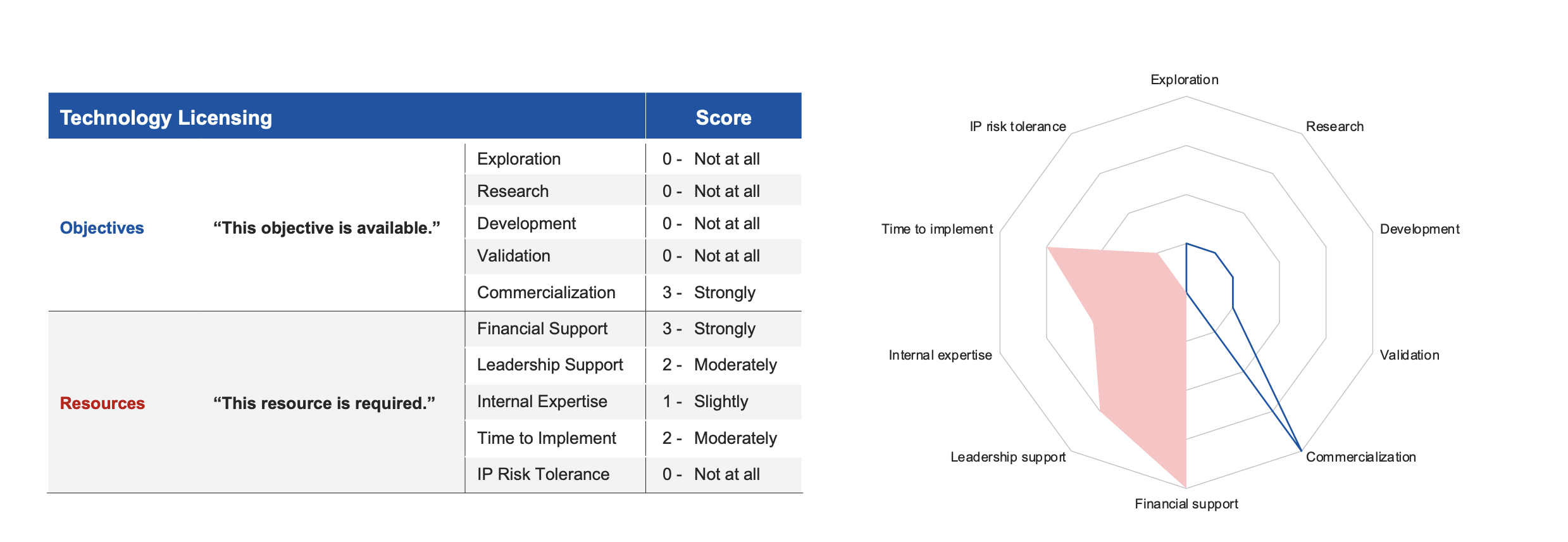
Illustrative Case: SANY Spark
SANY is a Chinese multinational heavy equipment manufacturing company headquartered in Changsha, Hunan Province. It is the sixth-largest heavy equipment manufacturer in the world with 2018 revenue of $8.3 billion USD. In order to sustain its growth SANY, is undergoing a business transformation with a focus on digitalizing core operations and developing integrated hardware-software solutions.
The SANY-SPARK incubator was launched in January 2016 to provide early access to technology and business model innovation through collaboration with startups. It supports an ecosystem of over 100 startups with office space, consultation and financial support through a 350 million RMB venture capital fund. The incubator focuses on projects relating to AI, big data, Internet of Things and new materials.
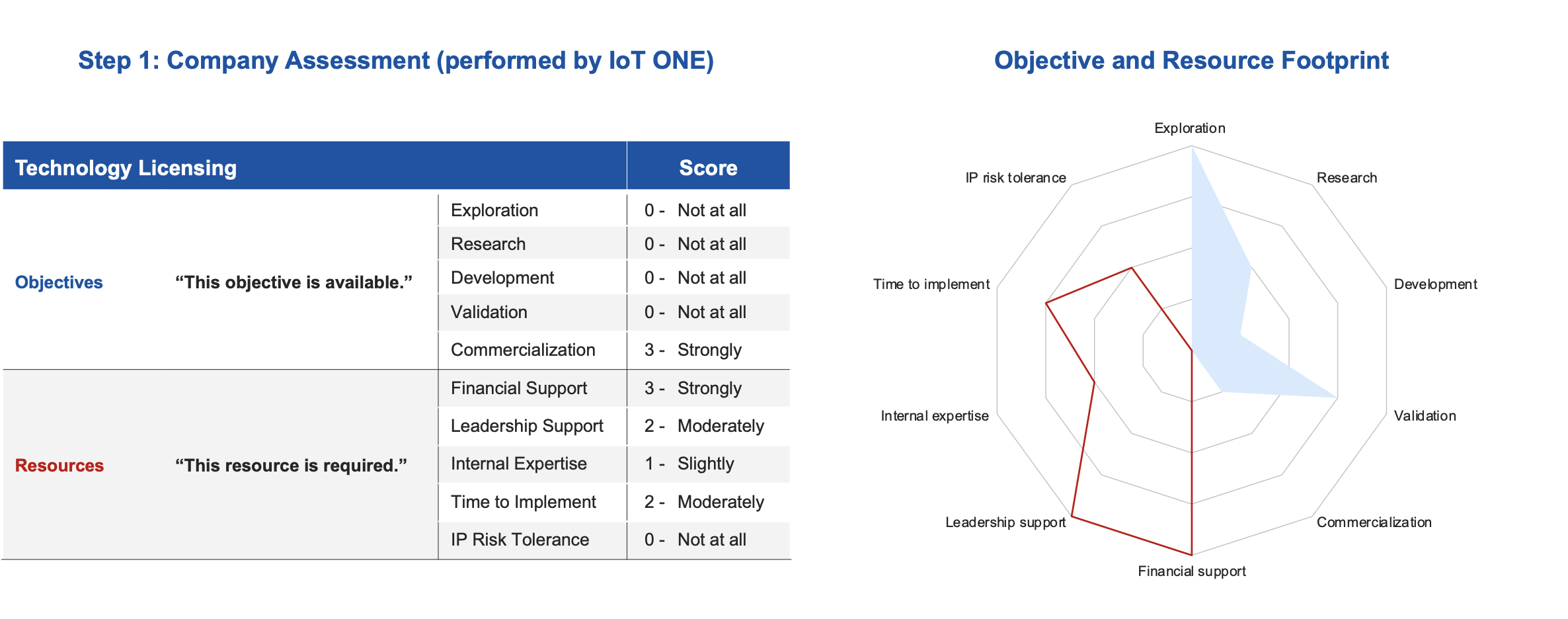
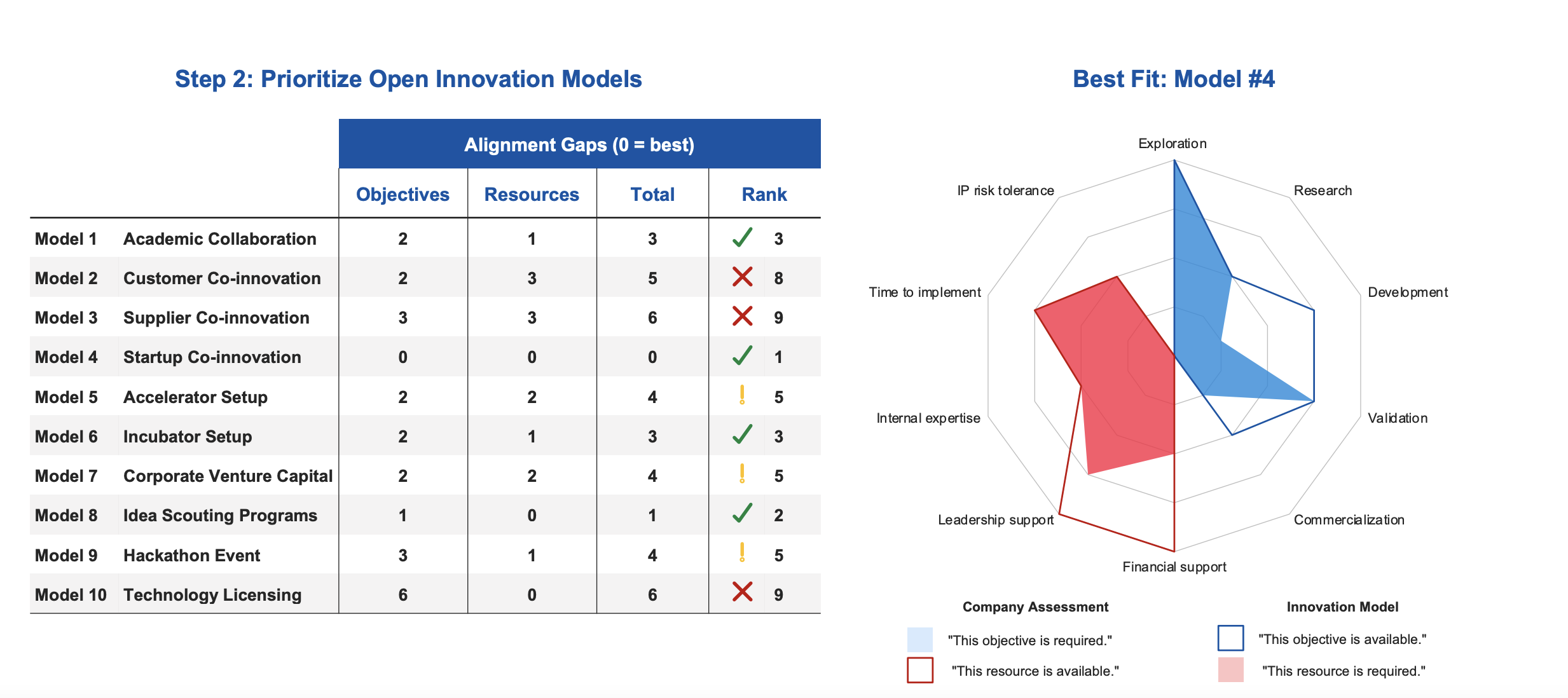
In this illustrative case, the startup co-innovation model was aligned most closely with SANY’s objectives and resource constraints. However, before engaging startups SANY had to attract companies to Changsha, far from China’s leading startup ecosystems. In order to accomplish this, SANY converted an under-utilized facility into an incubator branded as SANY-SPARK. This incubator provided a platform to attract startups with free space. It also enabled SANY to engage local and national government agencies for policy support for both SANY and the startups. SANY was able to achieve its innovation objectives with limited financial risk and is today recognized as a leader in industrial-digital solutions in China.
IoT ONE Insights
Download PDF.
Thank you for downloading PDF!
PDF report was sent successfully to your inbox.




.png)
